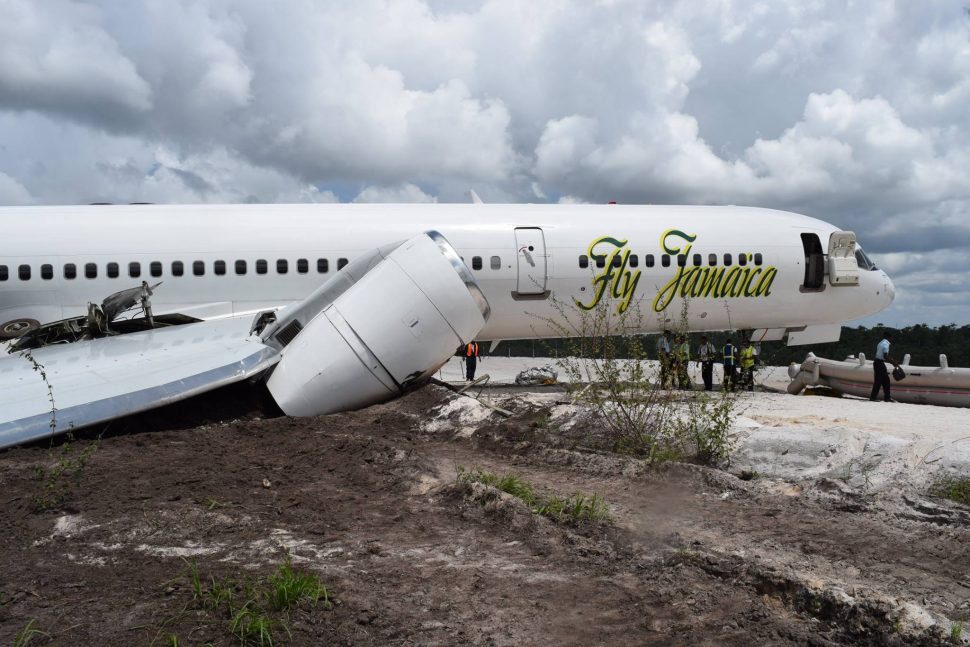Two Canadian law firms have filed a class action lawsuit with the Superior Court of Ontario against Fly Jamaica Airways over injuries and losses suffered during the crash landing of one of its planes at the Cheddi Jagan International Airport (CJIA) earlier this month.
Based on information retrieved from the website of Howie, Sacks & Henry LLP (HSH), it together with Camp Fiorante Matthews Mogerman LLP filed the Class Action lawsuit on November 23rd, 2018.
John and Tulsidai Somwar are said to be listed as the representative plaintiffs for the Proposed Class Action.
Stabroek News understands that HSH specialises in handling serious and life-changing personal injury claims resulting from all types of accidents and will in this case be led by HSH partner Paul Miller, co-lead counsel for the victims of the 2005 Air France crash at Toronto’s Pearson airport, and HSH associate Valerie Lord.
Similarly, Camp Fiorante Matthews Mogerman represents victims of aviation accidents in Canada and internationally and has experience in various aspects of aviation accident litigation including claims against domestic carriers, claims involving international carriage under the Warsaw and Montreal Convention, mid-air collisions, air traffic control negligence and catastrophic failures of complex aircraft components such as turbine blades, main rotor blade, fuel control units and hydraulic control systems.
“Air travel is often held up as one of the safest forms of transportation. But when something does go wrong, as it did with Fly Jamaica Flight OJ256, the consequences can be severe. Airplanes are complex vehicles that require specialized training to operate, rigorous inspections, and well-defined emergency procedures in the event of serious mechanical problems, poor flying conditions or other unexpected situations on board,” HSH said in its statement on the lawsuit.
“Passengers, sometimes numbering in the hundreds, can be at serious risk of physical injuries, disability or death in the event of severe in-air turbulence or crash landings on land or in water. Even if they survive without sustaining much physical harm, being a part of a severe aircraft incident can result in post-traumatic stress disorder which can be every bit as debilitating as some physical injuries. Victims may also experience loss of personal property and other significant disruption to their lives,” it added.
Directly addressing the concerns of the November 9 accident at the CJIA, the law firm noted that after a long frustrating period, Canadian passengers finally returned to Toronto the following week.
However, many of the passengers have since criticised Fly Jamaica for the lack of communication following the crash landing, while valuable belongings left on the plane after evacuating, such as jewellery, cash and electronics, were unaccounted for.
“Victims of this accident deserve answers and compensation for their pain, suffering and losses,” the statement said.
It has been reported that the Toronto, Canada-bound Fly Jamaica flight OJ256 returned to CJIA after experiencing hydraulic issues. The aircraft, however, overshot the open runway and veered to a closed section, resulting in damage to the right wing and propeller. The plane was immediately evacuated.
Ten passengers were taken to the hospital soon after. An eleventh person, Rookhia Kalloo, 86, was subsequently hospitalised with a fractured skull several days later and died.





